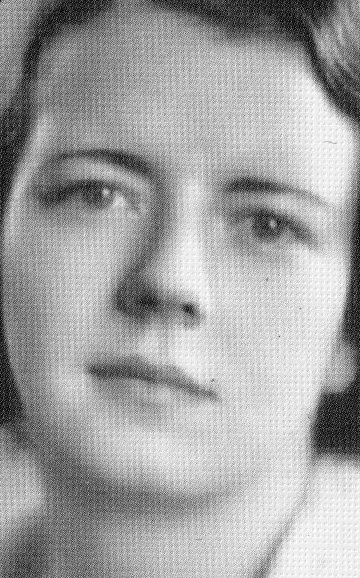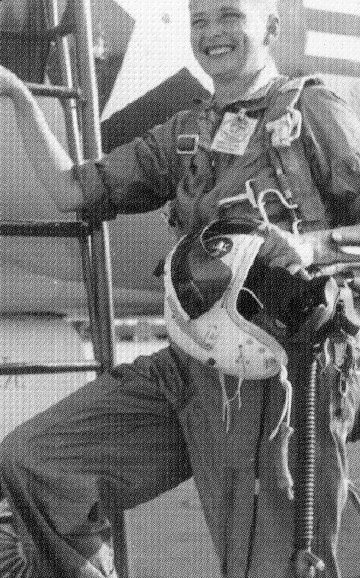Discover the Brave Women of Air and Space
Playing cards from the International Women’s Air & Space Museum, 2013.
The other morning when I walked the trail, I ended up walking in the other direction.
I tend to walk the same trail most days. It's easy, it's near my house and it's beautiful. To change things up a bit, I sometimes decide to walk starting from the other direction. It's strangely discombobulating. The rocks are at different angles, the trees look strange, and when I'm up on the ridge line the land falls away to my left rather than my right. I photograph what's before me as if I've never seen it before.
Sometimes it's good to look at things from a different point of view.
A Point of Balance
For a video piece I made back in 2013, I explored feats of physical endurance by women in various fields; space exploration, mountaineering, motor racing, gymnastics, aviation, long-distance running, and long-distance swimming. All activities that could not have been further from my domestic life at that time, parenting two girls aged 7 and 5.
Immersed in this world of adventure and extreme physical achievement, my video used sound and old footage I found on youtube combined with videoing myself trying to achieve balance in my home.
The wife of a college friend enjoyed my piece and consequently sent me a gift. It arrived beautifully wrapped in paper printed with the obtuse words of some critical photographic theory. Wrapped inside was a pack of playing cards.
I first wrote about this pack of playing cards back in 2014 when I had a different type of blog on a different type of website. Reading my post through again, I think I can do better. I'm looking at these cards from a different point of view.
The International Women's Air & Space Museum
The cards were produced by the International Women's Air & Space Museum and feature fifty-five unique photographs of women pilots and astronauts important in the world of space flight and aviation through history from the 1930s up to the 2000s.
There are formal studio portraits, informal group pictures, and documentary-style images, in colour and black & white. There are intriguing names: Whirly Girl, Powder Puff Derby, Air Racer, Warbird pilots, and an Air Zoo. With the help of google, I find out more.
Willa Brown
Edith Dizon
Elizabeth Macqueen
Phoebe Omlie
A Number of Firsts
There are a few 'firsts' in the collection. Willa Brown (1906-1992) was the first African American woman pilot to be licensed in the US, the first African American officer in the Civil Air Patrol and the first woman to earn both a pilot and mechanic’s license. And that's not all. In the early 1950s, she became the first African American woman to run in a congressional primary, running twice for congress in Illinois.
Next up, in no particular order, is Edith Dizon (1922-2014). I can't find many details about Edith's life other than a scrapbook she kept in the late 1960s and a few phone numbers. Her playing card details her as the first female Filipina pilot after she began flying in 1959. Dizon also held a record in the Philippines for high-altitude flight in a light aircraft. She reached 13,120 feet without the use of oxygen.
Elizabeth Lippincott McQueen (1858-1958) was the founder of the Women's International Association of Aeronautics despite never actually earning her pilot's license. She campaigned extensively throughout her life for the right for women to train as pilots and have careers in the aviation industry.
She organised the first official Women's National Air Derby in 1929, an air race from Santa Monica, California finishing in Cleveland, Ohio nine days later. Phoebe Omlie (1902-1975) won the light class in 25 hours, 12 minutes and 47.5 seconds.
Omlie was a formidable aviator setting speed, endurance and altitude records. She was the first woman to receive an aeroplane mechanic’s license, the first licensed female transport pilot and the first woman to be appointed to a federal position in the aviation field. (source: Wikipedia)
I'm looking at a portrait, black & white in the dreamy soft focus of the 1930s. Helen MacCloskey (1909-1977) looks like a movie star which she is. A different kind of star. By the age of 22, MacCloskey had her private pilot's license, a transport pilot's license, and a limited commercial pilot's license.
Her playing card caption says, 'world distance record 1936' but I can't find anything about it. I do find the women's world speed record she achieved in 1935. There's also a reference that she was a member of the 99s, an international organisation of licensed women pilots but when I search for her on the website there are no results. It's interesting who leaves no trace.
Helen MacCloskey
Jerrie Cobb
Valentina Tereshkova
Peggy A Whitson
Space Flight
The first woman into space was Russian cosmonaut, Valentina Tereshkova (b. 1937). In 1963, she orbited the Earth in Vostok 6, forty-eight times (or forty-five depending on where you read) before coming back down to earth three days later.
Before Valentina was launched into orbit, a privately funded project in the US was testing a group of women to see if they had what it took to become an astronaut. Up to this point in the late 1950s, only men were being tested and trained.
The testing programme was devised by Dr William Randolph Lovelace an aerospace physician and the head of NASA's committee on life science. Lovelace, however, was also interested in testing women too for the space programme.
Sponsored by his friend, female pilot Jackie Cochrane, several women underwent the same rigorous testing protocols Lovelace had created for the men. Thirteen out of twenty-five women passed the first round of tests with Geraldyn "Jerrie" Cobb (1931-2019) continuing to pass all three stages.
These thirteen women were invited to continue their training but their dreams of space flight were crushed when the programme was cancelled. The women have become known as the Mercury 13.
It wasn't until 1978 with the advancement of the Space Shuttle program that the US civil space agency selected any female astronaut candidates. Sally Ride (1951-2012) became the first American woman into space in 1983 aboard the space shuttle Challenger, twenty years after Tereshkova’s historic flight.
In 2007/2008, US astronaut Peggy A Whitson (b. 1960) became the first woman commander of the International Space Station. Over her career, Whitson has spent 665 days in space, more than any other NASA astronaut. She also holds the record for the oldest woman spacewalker among numerous other achievements.
In 2021, Whitson was confirmed as commander of Axiom Mission 2.
Whirly-Girls and Night Witches
There are more. Many more. It's hard to know where to stop. I discover a Whirly Girl is a helicopter pilot. The first official Whirly Girl was German pilot Hanna Reitsch (1912-1979) a test pilot for the Luftwaffe. In 1938, Reitsch became the first person to fly a helicopter inside a building, Deutschlandhalle in Berlin.
And there are the Night Witches, a women-only Soviet combat regiment who flew over 23 000 sorties at night in planes built for crop dusting.
I will leave this for now. I’ve already spent longer than I intended here. It’s been a fascinating trip through the history of flight through the experiences of women pilots. They are an inspiration.










